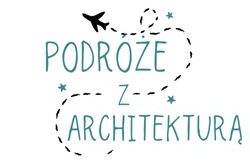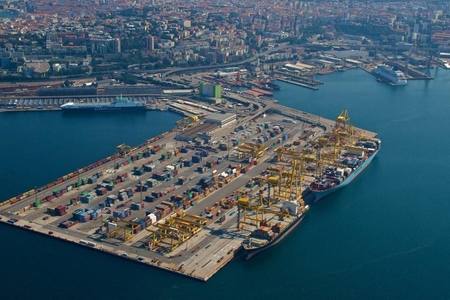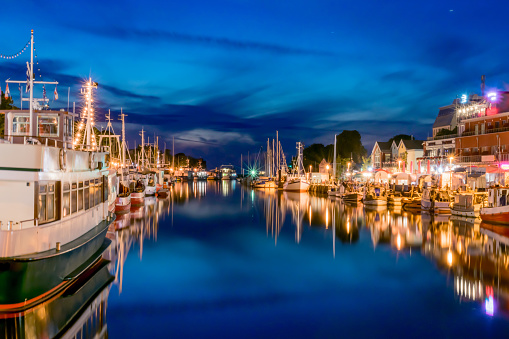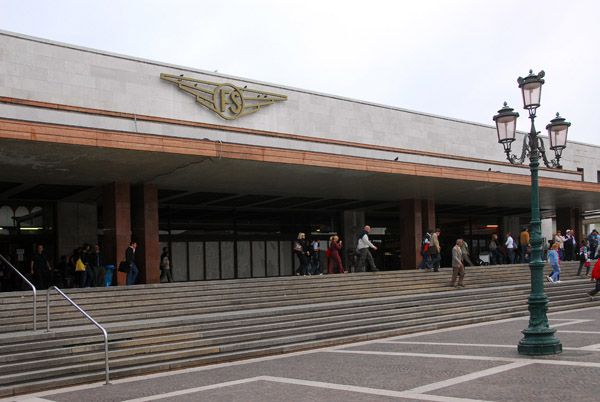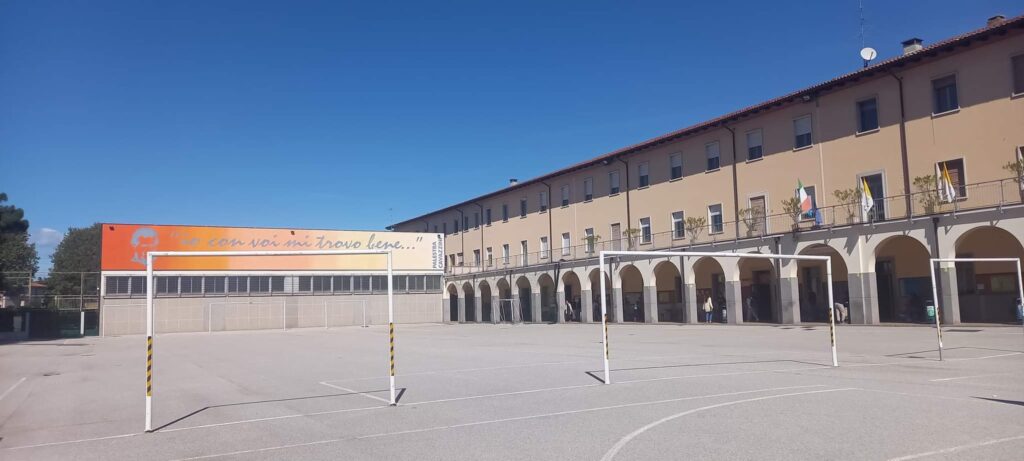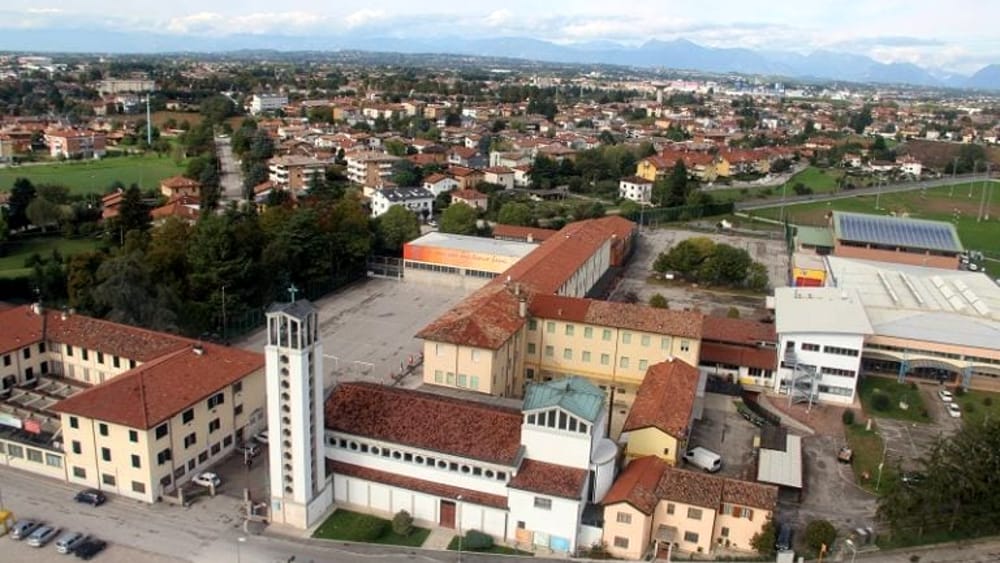Public utility architecture
In this article you may find:
Small and big trips – architecture of public transport
Building fun in Venice – Biennale exhibition
Italian school of life – how architecture helps gaining knowledge
1. Small and big trips - architecture of public transport
Majority of people, busy with work and chores don’t pay attention to the appearance of the place, from which they travel, however sometimes it is worth looking at the beauty of them. We chose three definitely worth seeing places of public transport.
The Marco Polo airport in Venice is located 12 kilometers from the center of the city. It is a reference point of civil aviation in Italy, designed for a long-distance journeys and today i is one of three Italian intercontinental gates.
The marco polo airport was built in 1960, but renovated every few years. It’s the most prestigious and modern airport on venice Plain. An unusual glass roof at the passenger terminal entrance recalls the Venetian glass blowing tradition. Its complex geometry helps travelers orientate themselves in the receiving hall. Besides that, there’s a reflecting water pool on the ground floor, where natural light floods into the all of the surrounding spaces.

Zdjęcie startującego samolotu
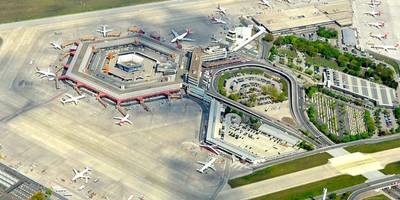
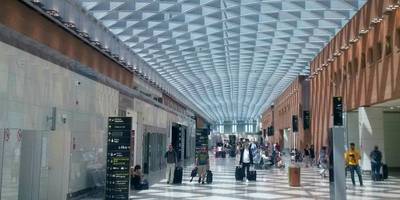
Port of Triest is located by the Adriatic Sea. The system served as a model was a Lagerhäuser system of northeuropean ports. Project was designed by french engeener Paulin Talabot. Port is devided on 5 diffrent Free Spaces, from which 3 were dedicated to comercial activity, and the other 2 to industrial activity.
The architectural features of these monumental buildings lie in vertical and horizontal lines along the facades. During construction, the decoration was achieved through the use of various finishing materials and the work of decorators and stonemasons. Every building is an example of the technic architecture from the end of XIX century.
Santa Lucia railway station is located in Venice near Canale Grande. It was build in the 30. of XX century. It has 8 platforms and it is one of 13 most important italian train stations. Santa Lucia is connected to Venezia Mestre station with 4 kilometers bridge.
Santa Lucia railway station isn’t very high, but it’s much longer. The facede of the station is diversified by Venetian lions placed on the flanks of the building. Visually architectural designs that incorporated grandly simplistic, symmetrical, sharp-edged, sturdy structures were chosen. This unique style aids the observant tourist in identifying a historical timeline.
2. Italian school of life - how architecture promotes the acquistion of knowledge.
Venetian lowland it’s a capital of science for many young people, both Italians and other nationalities. Education of the youngest generations it’s the basis of actions for the country, the foundation for building a society and the future of the country. For the studying to be successfull, adequate working conditions are needed, architecture of schools should support or even make it easier for students to develop.
During our stay in Udine, we visited the Scuola Primaria Paritaria Bearzi, a Salesian primary school connected to the technical school, many times. The building has been opened since World War II and is still fully used today. Students have at their disposal many fully equipped classrooms as well as two sport fields. Older students can develop technical passions, mainly related to mechanics and computer science, in dedicated places. A key part of the school is also a large, common canteen.
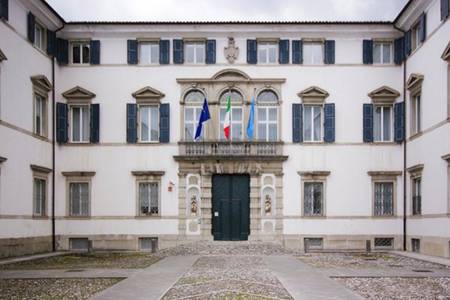
Udine also enables development for the students, among many there’s the University of Udine. The school places 559 in the Word ranking and 30 in Italy. In the XVII century tere was a monastery of Santa chiara, In the main part of the school. The monastery was destroyed during the Word war I and turned into a fortress of knowlage. Studing here is possibile In both talian and friulian. The building is equipped with many study halls or IT rooms.
3. Building fun in Venice- Biennale exhibition
During our stay in Italy, we had a great opportunity to see one of the most popular art exhibitions in the world, called Biennale. Many countries had a chance to promote its character with the help of art. During the tour walking from pavilion to pavilion we get to enter completely different realities and see the walls which are indifferent only by the things our artist put inside.
The gallery is located in one of Venice’s parks, close to the port, what makes the vibe of this place more unique, and allows a better and more detailed interpretation of the work. After entering the gardens we see a large map, that helps with general orientation of the buildings, that we’re especially interested in, as well as it allows us to get acquainted with infrastructure and makes the sightseeing easier.
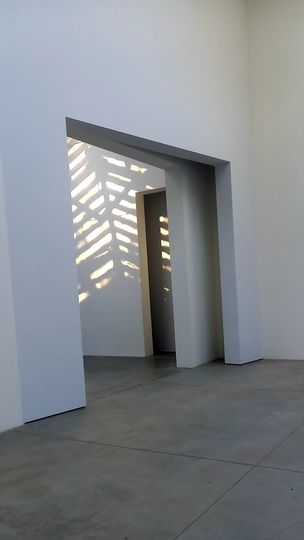
After entering, we get to see a Spanish pavilion to our left. It might sink into many memories since it’s so unexpected. This pavilion was inspired by the current situation in the country. The conflict between Catalonia and Spanish government. The author, Catalan (Ignasi Aballi) wanted to show his statement. He wanted to make people interpretate the art their way, yet still understanding his point of view. Based of his work we can consider the Biennale exhibition as space to express our own feelings

The French pavilion is one of the most worthy of seeing since this country won this year’s festival. Zineb Sedira, the French artist was born in Algeria. He made a film installation XXX-Dreams have no titles”- a tribute to a postcolonial film.
Supposedly the verdict of the jury honoured France “in recognition and gratitude for many years of exchange of ideas and solidarity as the idea of building communities in the diaspora. For looking at the complex history of cinema beyond the West and diverse histories of resistance in this work”.
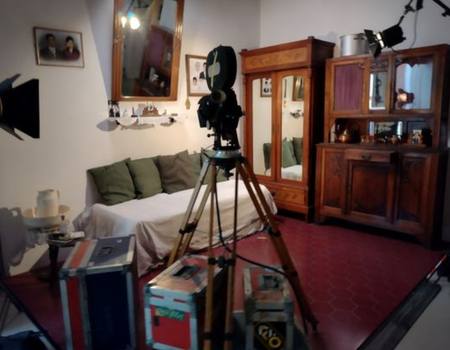
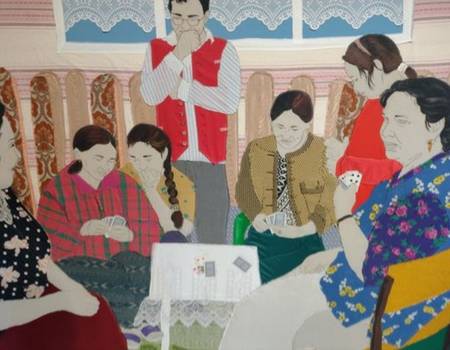
The next pavilion, which we can’t just walk pass by is the polish pavilion. The author of it is Małgorzata Mirgi-Tas. For the first time the representative of Poland is national minority of Roma. The exhibition “Enchanting the world” is an attempt to find the place of the Roma community in European art history. In her works – large-format macaques – Mirga-Tas shows a symbolic scenes taken from the tradition, but also from rome daily life. In one of the inteviews artist delclared that “With art I fight against exclusion”.
